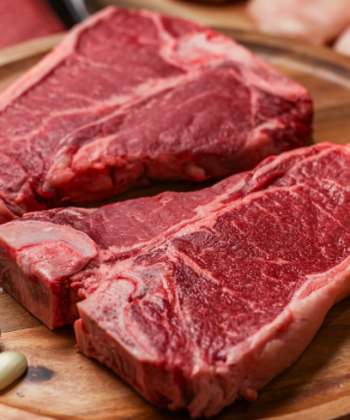Baby food pouches are a convenient and popular option for parents on the go. These pre-packaged foods offer an easy way to ensure babies get essential nutrients without the hassle of preparing meals from scratch. However, not all baby food pouches are created equal. Some contain unnecessary additives or excessive sugar, while others may not meet your child’s nutritional needs. To help you make informed choices, here are some key things to consider when buying baby food pouches.
1. Examine the Ingredients List
One of the most important things to look for is a clear and simple ingredient list. High-quality baby food pouches should contain whole, recognisable foods like fruits, vegetables, or grains. Avoid pouches that contain artificial flavours, preservatives, or sweeteners. If sugar or fruit concentrate appears among the first ingredients, it’s best to choose a different option.
Look for nutrient-rich ingredients like spinach, carrots, or oats, which provide vitamins and minerals essential for your baby’s growth. Pouches that contain protein sources like chickpeas or yoghurt are also a good choice, especially for growing babies needing more balanced nutrition.
2. Choose Age-Appropriate Textures
Different pouches are designed for different stages of development. It’s important to select the appropriate texture based on your baby’s age and chewing abilities. For younger babies, smooth purees are easier to swallow and digest. As your child grows, you can transition to thicker blends with small chunks to help them develop chewing skills.
Stage 1 pouches are typically single-ingredient purees for beginners, while stage 2 and 3 pouches offer more complex blends. Choosing the right texture encourages your baby’s development and makes it easier to introduce new foods.
3. Watch for Added Sugars and Sodium
Some baby food pouches contain hidden sugars or high sodium levels, which aren’t necessary for infants. Too much sugar can contribute to unhealthy eating habits, while excessive sodium isn’t suitable for developing kidneys. Always check the nutrition label and opt for pouches with minimal or no added sugars and salt.
Natural sweetness from fruits like apples or pears is a good indicator of a healthier choice. These ingredients not only satisfy your baby’s sweet tooth but also introduce them to flavors they are more likely to enjoy later in life.
4. Look for Organic or Non-GMO Options
Many parents prefer organic or non-GMO baby food to reduce their child’s exposure to pesticides and chemicals. While organic options can be more expensive, they offer peace of mind by adhering to stricter farming standards. However, just because a pouch is labelled organic doesn’t automatically mean it’s the best choice—always check the ingredients to ensure it meets your baby’s nutritional needs.
Non-GMO options are another good alternative if you’re concerned about genetically modified ingredients. Whether you choose organic or non-GMO, the goal is to provide your baby with clean, wholesome foods.
5. Ensure the Packaging is Safe
Since babies consume food directly from the pouch, it’s essential to make sure the packaging is BPA-free. BPA (bisphenol A) is a chemical found in certain plastics that can leach into food and pose health risks. Look for pouches explicitly labelled as BPA-free to ensure your baby’s safety.
Additionally, make sure the pouches have child-safe caps to prevent choking hazards. Some brands offer resealable caps, making it easy to store leftovers for later without wasting food.
6. Be Mindful of Expiry Dates
While baby food pouches are shelf-stable, it’s crucial to check the expiry dates before buying. Consuming food past its expiration can compromise taste and safety. If you’re stocking up, rotate the pouches by placing the ones with earlier expiration dates at the front to ensure they get used first.
Proper storage is equally important—once opened, many pouches need to be refrigerated and consumed within 24 to 48 hours. Following storage instructions helps maintain the freshness and nutritional value of the food.
7. Monitor for Potential Allergens
If your baby has allergies or food sensitivities, carefully read the ingredients list to avoid allergens like dairy, nuts, or soy. Some pouches are specifically labelled as allergen-free, which can be helpful for parents with concerns.
When introducing new foods, especially those that might be allergens, try one at a time and monitor your baby for any signs of an allergic reaction, such as a rash or upset stomach. Introducing allergenic foods gradually allows you to identify any issues early on.
8. Balance Pouches with Fresh Foods
While baby food pouches are convenient, it’s essential to strike a balance between pre-packaged foods and fresh meals. Relying solely on pouches may limit your baby’s exposure to different textures and tastes, which are crucial for their development.
Whenever possible, complement pouches with homemade snacks like mashed avocado, steamed vegetables, or scrambled eggs.
Conclusion
Choosing the right baby food pouches involves more than just grabbing a convenient option off the shelf. Parents should look for pouches with whole ingredients, age-appropriate textures, minimal sugars, and safe packaging. Organic or non-GMO options offer additional peace of mind, while careful monitoring for allergens ensures your baby’s safety.
By combining pre-packaged pouches with fresh foods, parents can provide a balanced diet that promotes healthy growth and development. Thoughtful choices now help lay the foundation for lifelong healthy eating habits.


